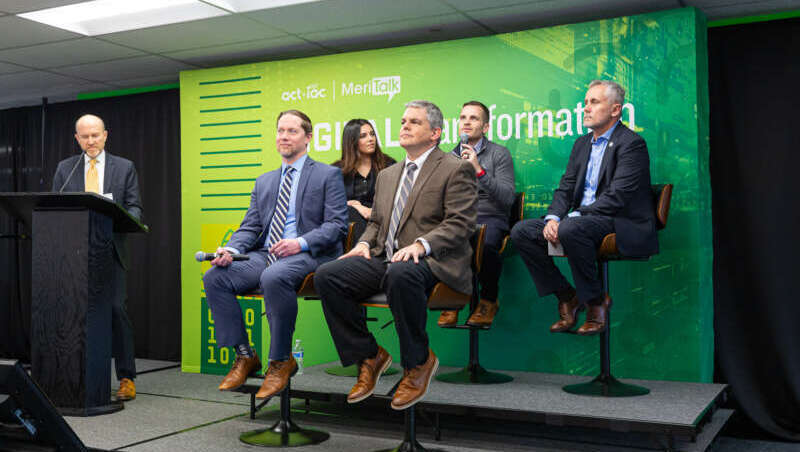
As Federal agencies work to navigate the hybrid work environment, experts at the Feb. 22 Digital Transformation Summit in Reston, Va., organized by MeriTalk and ACT-IAC, said it all comes down to intentionality in the workplace and flexibility for employees.
While remote work served as a great normalizer during the COVID-19 pandemic, Federal experts explained that hybrid work is actually the harder model.
“I think you can’t hit the intentionality piece enough about hybrid,” said Kevin Duvall, chief technology officer (CTO) and acting chief information officer (CIO) at the Administration for Children & Families (ACF) within the Department of Health and Human Services (HHS). “With hybrid, you really need to understand, ‘Am I leaving a voice out of the room?’”
“Hybrid is the harder model,” he added. “But it’s also, when I think about what it unlocks for the government, it unlocks national talent pools, it unlocks people having additional flexibility in their lives.”
For Duvall, one intentional choice he made was to rip the cubicles out of the workplace, building an open, collaborative space. “People need to be using the gift of presence, that gift of being in the same area with each other effectively,” he said.
Todd Hager, the moderator of the panel and the vice president of strategic initiatives at Macro Solutions, noted that the COVID-19 pandemic and the shift to remote work “dramatically accelerated and transformed our digital workforce.”
“Now, I feel like we’re getting to the other side of this, and we have a whole new normal to manage,” added Jennifer Rostami, executive director of the Centers of Excellence within the General Services Administration. “I think there’s extra awareness that has to fall on leaders.”
Before the COVID-19 pandemic hit, the expectation was to be in the office. During the COVID-19 pandemic, the expectation was to stay at home. But now, there is no expectation, according to Greg Singleton, chief artificial intelligence officer at HHS – and that poses challenges of its own.
“Now, we don’t have a default,” Singleton said. “Now, it is: we have to be intentional. We have to think about why am I hosting this meeting here? How am I setting up this meeting? What’s going to happen in this interaction that I have with my folks?”
Singleton said that it’s not something that he has the answer to right now, but in making deliberate choices, he hopes the Federal government will “get to a better, newer normal that reflects a lot of our values.”
At the Department of Veterans Affairs (VA), Chief People Officer Nathan Tierney said his agency is taking a “people-centric approach,” arguing that people are the most important part of the business.
Tierney agreed that hybrid and remote work unlock a lot of opportunities for the Federal government, especially when it comes to improving recruitment and retention efforts.
“You’ve got to meet people where they are, not where you want them to be in this environment if you want to recruit and retain talent,” he said. “So, I think taking that individual approach can be very helpful with some of the flexibilities we actually do have in the Federal government to be able to employ.”
Along those same lines, Kent Cunningham, the chief technology officer at Microsoft, explained that everyone has a different preference for their workplace.
For instance, he said a recent Microsoft research study of over 20,000 people in 11 countries found that 45 percent of respondents want to work remotely and 45 percent want to go back into the office.
“What that tells you is that different people need different work styles for different reasons,” Cunningham said. “You may have different learning styles, you may be more comfortable in the office, you may need more personal interaction. You may live two and a half hours from your office and not want to waste that time. And so, what we’re learning is that we need to give people a reason to come to the meeting in person if we expect them in person.”
